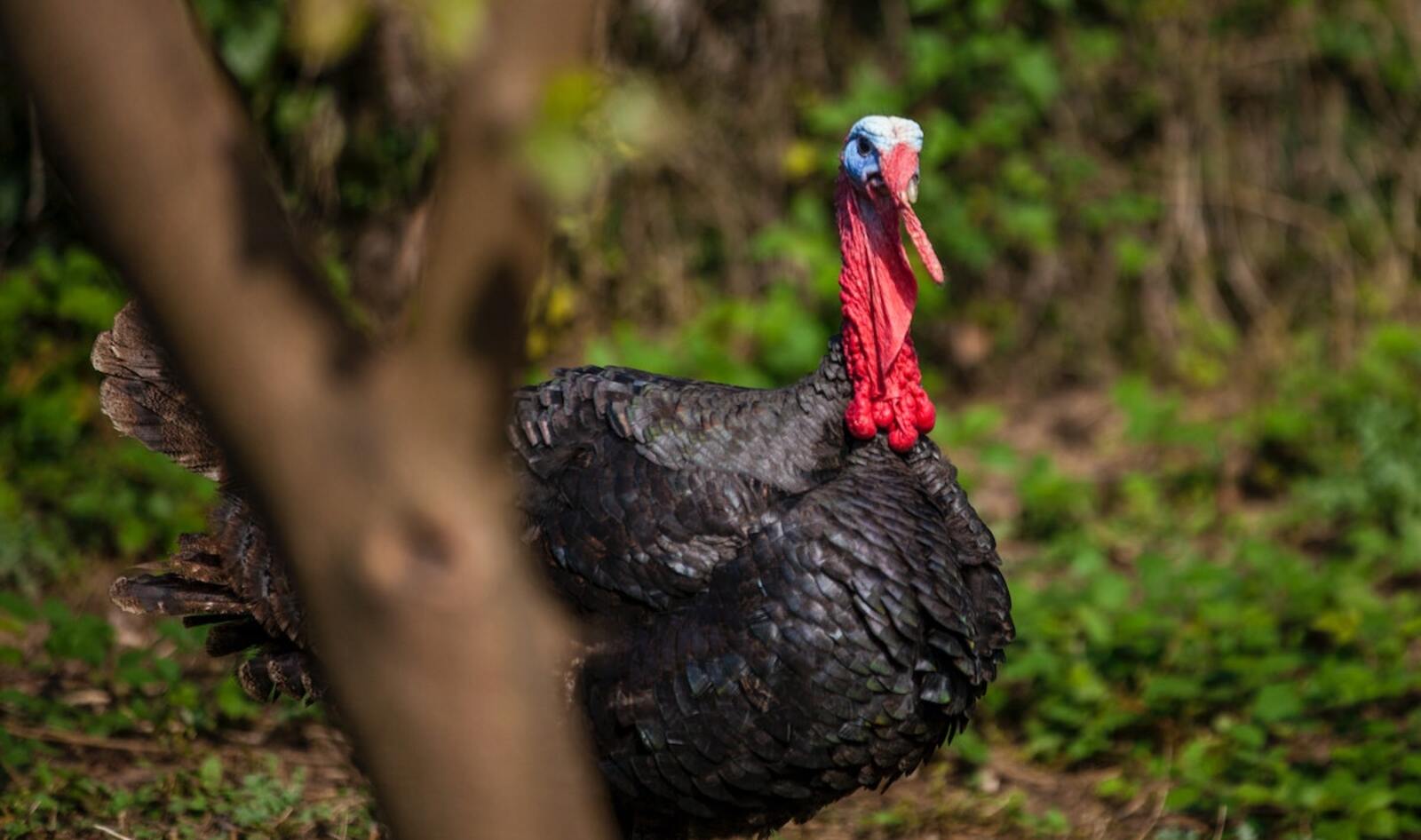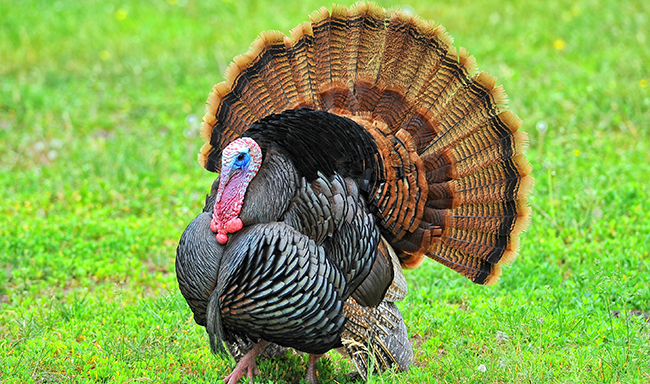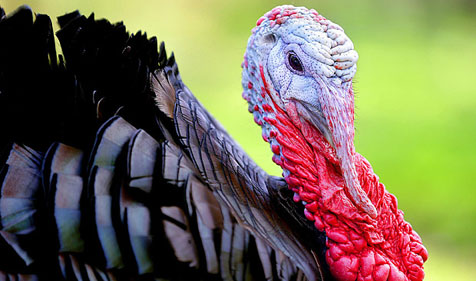
Fall marks the season of comfort with its colorful foliage, warming fall flavors, and cozy sweaters. However, unfortunately, this season is not warm and fuzzy for everyone. Every year, close to 46 million turkeys are slaughtered for Thanksgiving alone. We know these social birds are far more than a centerpiece at a holiday table—they’re sentient beings that deserve to live out their natural lives to the fullest. Here are 12 facts about turkeys to warm your heart and make your omnivore family think twice about what’s for dinner.

1 Turkeys were revered in ancient Mexican cultures.
In 300 B.C., turkeys were more than just the centerpiece meal at the table. In fact, Mayan religious imagery depicts turkeys as representations of God, and they worshipped as symbols of power and prestige. On Thanksgiving, we give thanks for live turkeys—not the ones stuffed with breadcrumbs.
2 The American turkey is named after the country Turkey due to a case of mistaken identity.
An African bird called the guinea fowl (which resembles the American turkey) was brought to Europe through Turkish lands by the Portuguese. Europeans called these birds ‘turkish chicken’ or ‘turkey cock.’ When Europeans saw a similar-looking bird in North America, they thought it was the same fowl and the name turkey cock—later shortened to turkey—remained.
3 Wild turkeys were at the brink of extinction.
In the early 1900s, the population of wild turkeys hit a record low of nearly 30,000 birds as a result of pervasive hunting. Fortunately, effective restoration programs were introduced and the populations recovered. If only all turkeys were allowed to run wild.

4 You can tell a turkey’s mood by looking at them.
The ability to change color is not unique to chameleons and octopi—turkeys literally show their true colors, too. The skin on a turkey’s head (the snood) and the skin under their throat (the wattle) can change between shades of red, white, and blue depending on how stressed, agitated, calm, or excited they are.
5 Individual turkeys have a unique voice and a wide range of vocalizations.
If you think all turkeys sound the same, science (and the turkeys) beg to differ. Turkeys are able to identify individuals by their voice which is how they recognize one another. Apparently, not all gobbles sound the same in turkey talk. Turkeys have elaborate vocal skills and can exhibit over 20 different vocalizations. Each has a distinct meaning ranging from a cordial greeting to a warning of danger.
6 Wild turkeys can fly short distances but most domesticated turkeys cannot.
Descendants of the wild turkey have been bred into the large, domesticated birds that we see today in order to increase meat yield for human consumption. This unnaturally large size is not conducive for flight. Trim turkeys left to roam and forage on their own are lighter which allows them to take to the air—if only for less than 100 yards.

7 Male turkeys put up an elaborate spectacle to attract a mate.
When it comes to attracting a female, male turkeys put on quite a show! Often called Toms or Gobblers, male turkeys puff up their bodies and spread their tail feathers in a grand display, simultaneously strutting to the sound of their own grunts and gobbles. The more outlandish the presentation, the more irresistible they seem!
8 One can tell a turkey’s gender by their poop shape.
Perhaps save this fact for after dinner, but it’s interesting nonetheless. Female droppings have a spiral shape while those of males are ‘J’ shaped. This has to do with the difference in reproductive anatomy of the cloaca—a one-stop exit for reproductive and digestive purposes. Who knows, this fact could come in handy in an obscure online trivia game.
9 Benjamin Franklin thought turkeys were more majestic than eagles.
If Ben Franklin had his way, America’s national bird might be the turkey. In a letter he wrote to his daughter in 1784, Franklin praised the turkey as “a much more respectable bird” and “a true original native of America.” On the contrary, he wrote that the eagle was “a bird of bad moral character,” “does not get his living honestly,” and is “too lazy to fish for himself.”

10 Turkeys swallow stones to aid digestion.
Anyone who has seen Moana may recall her sidekick, Hei Hei, attempting to eat a large stone. While the writers exaggerated the characteristic for comedic effect, there’s actually some truth to it. Turkeys don’t have teeth, so they swallow small stones to help grind up food in their first stomach—the gizzard. Bonus fact: turkeys have two stomachs.
11 Turkeys are highly intelligent and sensitive birds.
Owing to their intelligence, turkeys can remember precise details of an area even after a year of absence. Turkeys also have incredible emotional intelligence. They express empathy for other birds, form lasting social bonds, display affection, and even purr when they feel content and comforted.
12 Turkeys have superpowers.
Turkeys have keen hearing even though they lack external ears. Instead, they have small holes behind their eyes and can accurately locate sounds up to about a mile away. The placement of their eyes enables a 270-degree field of vision compared to humans’ 180 degrees. In addition, turkeys have superior color vision and can see UV light!
For more about animals and how to help them, read:
Here’s Why You Shouldn’t Eat or Exploit Bunnies
The Truth About Craigslist’s ‘Free’ Animals
These 10 Fish Facts Will Make You Swear Off Seafood
Shriya Swaminathan is a graduate student living in St. Louis, MO with her pooch Halley. She enjoys supporting local vegan spots, and is having a blast volunteering at The Gentle Barn in Missouri.
This post was originally published on VegNews.com.